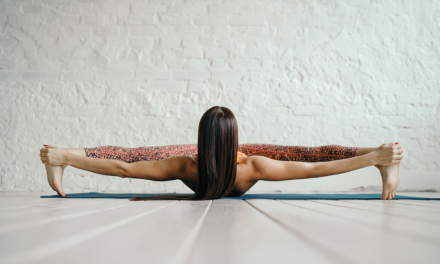Have you ever considered how much “stuff” you accumulate over time?
I know I have.
It’s incredible how clutter can creep up on us, crushing our living spaces. That’s when I discovered the world of extreme minimalism and decided to try it in my home and office. In this blog post, I’ll share my journey and offer tips on how you can live without unnecessary items in your home and workspace.
Are you ready to embrace a simpler, more focused life?
The Principles of Extreme Minimalism
1. Possess Only What You Need
The first step in adopting extreme minimalism is identifying what you truly need.
This involves assessing the items you own and determining their necessity. While some things are essential, like clothing and basic furniture, many items can be discarded or donated without negatively affecting your daily life.
2. Cherish Your Belongings
Once you’ve narrowed your possessions, learn to appreciate and care for them. This will help you resist the urge to accumulate more things, as you’ll be content with the items you have.
3. Embrace Simplicity
Minimalism isn’t just about reducing material possessions; it’s also about adopting a simple, uncluttered lifestyle. Embrace simplicity by focusing on what truly matters and eliminating distractions and time-wasters.
Implementing Extreme Minimalism in Your Home
1. Declutter Room by Room
Tackling your entire home may feel overwhelming, so breaking the task down into smaller, manageable steps is essential. Start by decluttering your living spaces one room at a time, and remember to celebrate your progress.
2. Consider Multipurpose Furniture
Invest in furniture that serves multiple functions, like a sofa bed or a dining table that doubles as a workspace. This will help you save space and reduce the items you need in your home.
3. Adopt a “One In, One Out” Rule
Consider adopting a “one in, one out” rule to prevent accumulating clutter. This means that for every new item you bring into your home, you must remove or donate an existing item.
Creating an Ultra-Minimalist Office Space
1. Go Paperless
One of the most significant sources of clutter in an office is paper. To create a minimalist office space, try going paperless by using digital tools and cloud storage for your documents.
2. Prioritize Your Workspace
A clean, organized desk is crucial for productivity. Ensure your workspace is free of distractions and contains only the essentials for your work. This might include your computer, a notebook, and a pen.
3. Use a Minimalist Color Palette
When designing your office space, opt for a minimalist color palette, like shades of white, gray, and black. This will help create a calming, focused atmosphere.
The Benefits of Extreme Minimalism
1. Increased Focus and Productivity
With fewer distractions and a more organized environment, you’ll find it easier to concentrate on your tasks at home and in the office.
2. Reduced Stress
Clutter can be a gigantic source of stress. By embracing minimalism, you’ll create a peaceful, clutter-free environment that promotes relaxation and tranquility.
3. Financial Savings
By owning fewer possessions and focusing on quality over quantity, you’ll likely spend less money on items you don’t need, leading to significant financial savings.
Embrace the Change
Living without unnecessary items in your home and office may seem daunting initially, but the benefits of embracing extreme minimalism are worth the effort. As you journey through this transformative process, you’ll notice its positive impact on your mental well-being, productivity, and finances.
Remember, the key to success is taking it one step at a time and consistently evaluating the items and habits in your life. Are you ready to jump extreme minimalism? What areas of your life could benefit from this approach? How will you maintain your newfound minimalist lifestyle in the long run?
Together, we can navigate this exciting journey towards a simpler, more fulfilling life.
Items to Remove for Extreme Minimalism in Home and Office
Here’s a list of items you can consider getting rid of to embrace extreme minimalism in both your home and office:
Home:
- Excess clothing and shoes: Keep only what you wear frequently and versatile items that can be combined.
- Unnecessary kitchen gadgets: Stick to essential tools and multi-purpose appliances.
- Excess dinnerware and glassware: Pare down to a minimal set that meets your daily needs.
- Duplicate items: Keep only one item, such as scissors, measuring tapes, or screwdrivers.
- Sentimental items with no purpose: Digitize photos and letters and only keep a few meaningful things.
- Unused electronics and cords: Recycle or donate old gadgets, and keep only the cords you actively use.
- Decorative items that don’t add value: Focus on a few meaningful pieces that bring joy or have a specific purpose.
- Unread books and magazines: Donate or recycle books you’ve already read or don’t plan to read, and cancel unnecessary magazine subscriptions.
Office:
- Paper clutter: Go paperless by scanning documents, using digital tools, and setting up cloud storage.
- Excess office supplies: Keep only the essentials, like pens, pencils, and paper clips, and donate or recycle the rest.
- Outdated reference materials: Update your resources with digital versions or recycle outdated materials.
- Physical business cards: Store contact information digitally and discard physical cards.
- Unnecessary desktop items: Keep your desk clean and focused by removing non-essential items, like excessive decorations and knick-knacks.
- Unused or broken office equipment: Donate, sell, or recycle equipment that’s no longer needed or functional.
- Cables and chargers for obsolete devices: Keep only those compatible with your current devices.
Extreme minimalism is about keeping only what you truly need and use. Removing these items from your home and office will create a more focused, organized, and stress-free environment.





